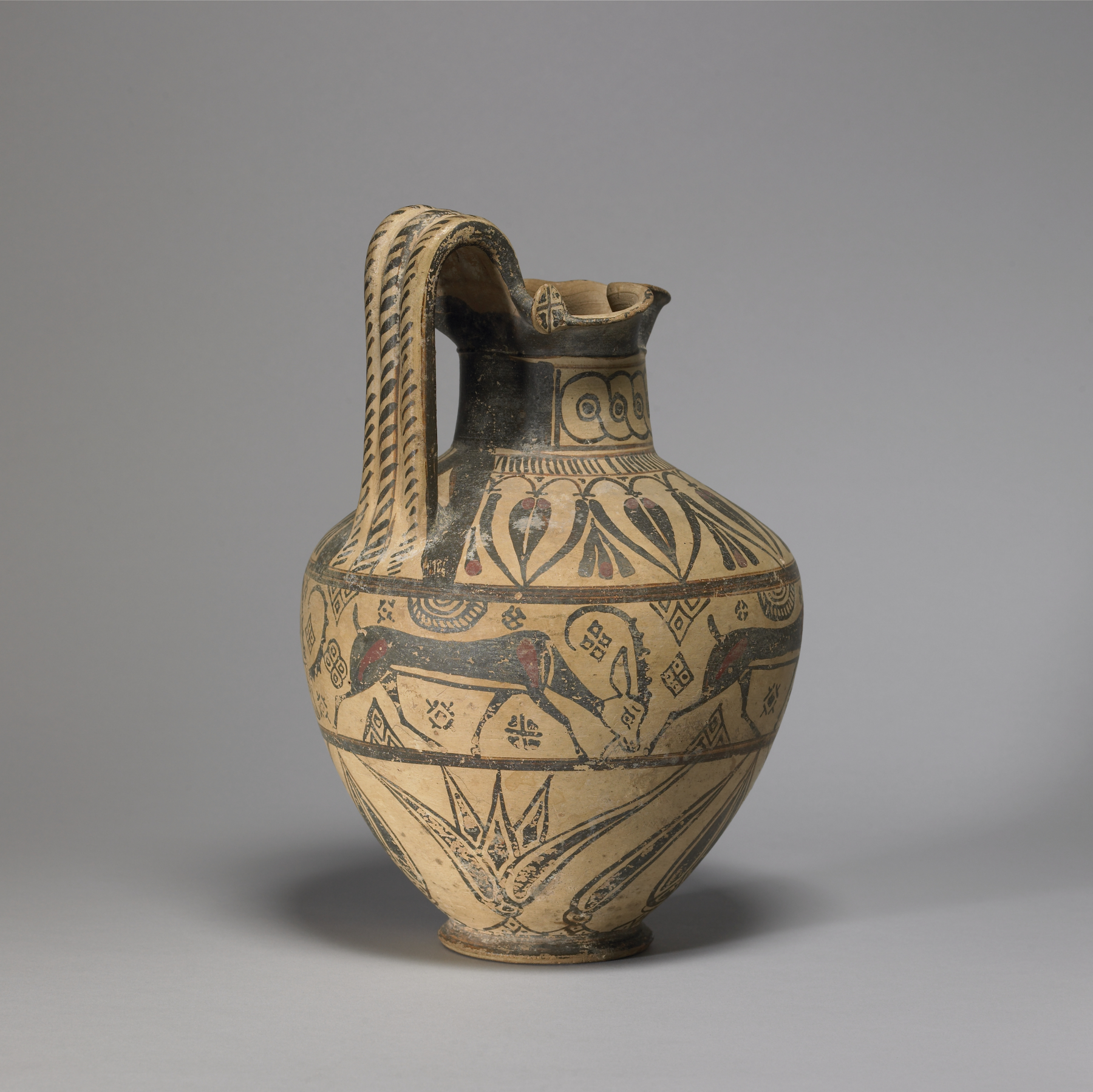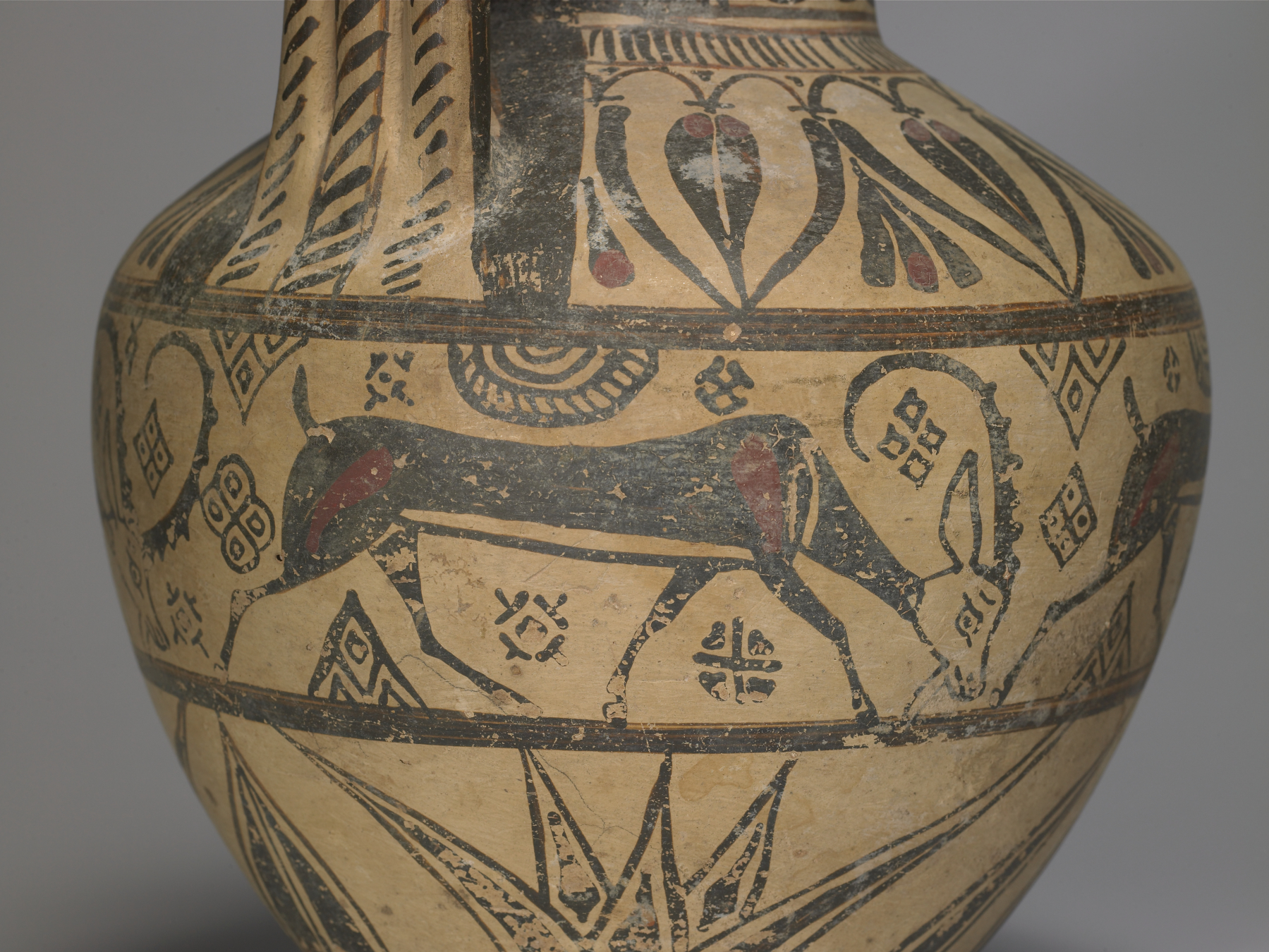Oinochoe in the Camirus, or "Wild Goat" Style
(Ancient Greece )
An "oinochoe" was used for serving wine. This piece's style is usually termed "Camirus," after a site on the island of Rhodes where many examples have been found, but they were actually made in the Greek cities of southern Asia Minor. The horizontal rows of decoration filled with wild goats and floral motifs reflect influence from the civilizations of the ancient Near East. The curving contours and combination of outlined shapes and solid black masses characterize this style, distinguishing it from the angular silhouettes of the pottery from the preceding Geometric period.
Provenance
Provenance (from the French provenir, 'to come from/forth') is the chronology of the ownership, custody, or location of a historical object. Learn more about provenance at the Walters.
Cecil Torr, Devon and London, by 1914, [mode of acquisition unknown]; Sale, Sotheby's, London, 2 July 1929, lot 7, pl. 1; William Randolph Hearst, San Simeon, 1929, by purchase; William Randolph Hearst Easte Sale, San Simeon, 1958, no. 5494; Walters Art Museum, 1958, by purchase.
Exhibitions
| 2007-2008 | Salviati and the Antique: Ancient Inspiration for Modern Glassmaking. The Walters Art Museum, Baltimore. |
| 1978 | In Search of Ancient Treasure: 40 Years of Collecting. The Walters Art Gallery, Baltimore. |
Geographies
Asia Minor (Place of Origin)
Measurements
H: 13 1/2 x Diam: 9 in. (34.3 x 22.8 cm)
Credit Line
Museum purchase, 1958
Location in Museum
Not on view
Accession Number
In libraries, galleries, museums, and archives, an accession number is a unique identifier assigned to each object in the collection.
In libraries, galleries, museums, and archives, an accession number is a unique identifier assigned to each object in the collection.
48.2108






